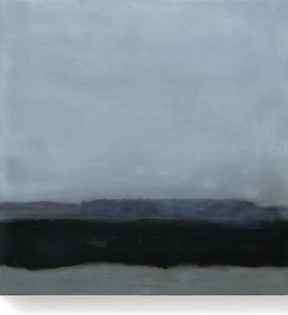All content © 2024 Janise Yntema
Janise Yntema's painting practise focuses on the ancient painting technique of beeswax encaustic, For over 25 years Yntema has refined her use of this material and is known for her work in this technique. Continually intrigued by the fine line between figuration and abstraction, Yntema's images evolve through slow accumulations of semi-transparent wax layers, light permeates these works and becomes compositionally present. In 2018, Yntema was awarded the International Encaustic Artists' Vendéenne Award for recognition of outstanding contribution and advancement of encaustic art.
Yntema's inclusion of original photography has brought her work in encaustic to a contemporary platform, blurring the boundary between photography and painting, Merging the digital with the ancient, Yntema alters the "truth" of these paintings in questioning how we locate reality when the manipulated and objective are merged.
Through the use of beeswax and her work with landscape, Yntema has focused on environmental concerns. In 2017 she presented the lecture "The Politics Behind the Bees" at the International Encaustic Conference, and in 2019, continued with the lecture: "The Environmental Politics of Wax and the Future of Encaustic." With a focus on the environment, human presence has remained minimised in her work. For Yntema, beeswax reveals the complex mystery of the natural world, the inherent fragile beauty of all life and the irreplaceable need for environmental conservation.
Q U O T E S
"Such an elegant way to hint at our planet's fate." – Anne Sutherland Harris, Art Historian
"Janise Yntema celebrates the beauty of landscape and atmosphere. Never in landscape format, her square or upright rectangles are thus perhaps images of aspiration beyond the merely earthbound." – Professor Duncan MacMillan, HRSA, FRSE, HRSA, The Scotsman
"Yntema's process involves mixed media, with one process obscuring another and the subject revealing itself at an enigmatic point."
– Jan Patience, The Sunday Post
"Yntema combines fine art with philosophy. In her response to landscape, the elusive experience of viewing light, always transitory, is the synaptic path to transcendence." – Christina Jansen, Managing Director, The Scottish Gallery, Edinburgh
"Her paintings capture and emanate light toward a transcendent feeling of tranquillity, order, and purity. Yntema's colours create silence and simplicity; an atmosphere of transcendent lightness remains.” – Jacquelyn Stonberg, Ph.D., Professor of Art History, Kean University, NJ
"In a minimalist manner, Yntema captures the recollection of light where hue is the reminder that opens an unseeable distance. She creates a physical container for the uncontainable.” – Joanne Mattera, NYC, Author, Curator, Artist
"Yntema captures what Rothko might have realized if, in fact, he'd had a more feminine understanding of the world."
– Andy Butler, Hercules and Love Affair
"With her affinity for the land and attraction towards the spiritual, Yntema's paintings embrace the primal and unseen found both in the world that surrounds and within. Sharing within the romantic tradition, her works rest firmly within the realm of the sublime."
– Mark Ferguson, Writer
"With a philosophical, aesthetic vision, Janise Yntema shares the emotional response of the Romantic poets to the surreal, sublime beauty of the natural world. Her superlative exhibition of majestic, moody paintings document with delicate detail ‘the earth’s fragile beauty,’ reflecting time, space and place – all at once, realistic, lyrical and imagined." – Vivien Tevlin, Arts and Travel Writer, The Smart Leisure Guide
H I S T O R Y O F E N C A U S T I C
Beeswax encaustic painting dates back over 2000 years. The ancient Greeks adorned their battle ships, statues and buildings with this combination of damar resin, beeswax and pigment. The Fayum tomb portraits, from the Roman Egyptian period, testify to the archival durability of this material. Beeswax, resin and pigment were the materials used to create the murals of Pompeii. This technique remained popular throughout the 6th and 7th centuries, but was replaced by tempera and fresco due to the intensity of time, labour and heat involved. Beeswax painting was virtually lost by the middle ages.
The term encaustic literally means to burn in. Any true beeswax and resin painting involves heat and the process to fuse the layers. Heat acts as the invisible solvent much as turpentine acts as an evaporating solvent for oil painting. The natural dammar resin gives the wax strength and durability. Beeswax and resin are organically pure and biological materials. From the labour of the honeybees to the natural Malaysian dammar resin, no chemicals are involved in this technique. The quality of this natural material is alive, like an organic skin, and can hold colour in a pure, luminous tone. No artificially manufactured material reveals such subtley.
– Janise Yntema, 2024
